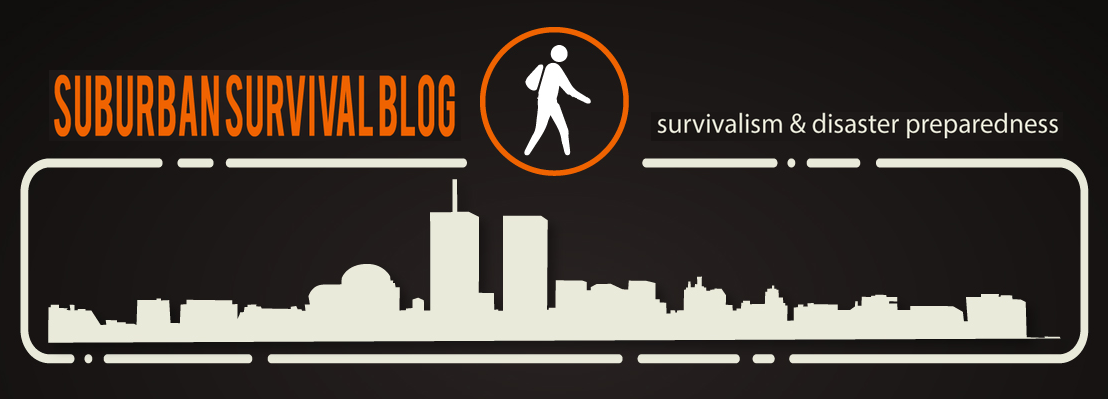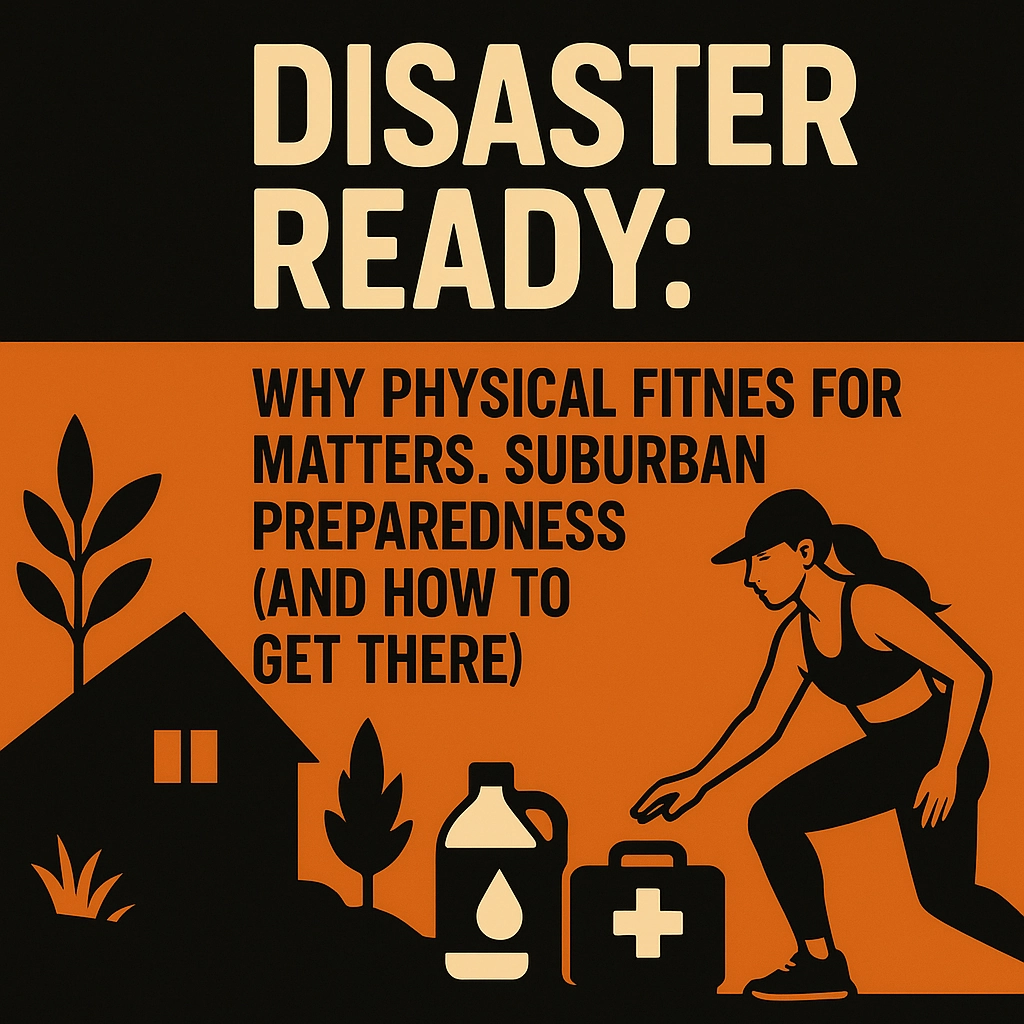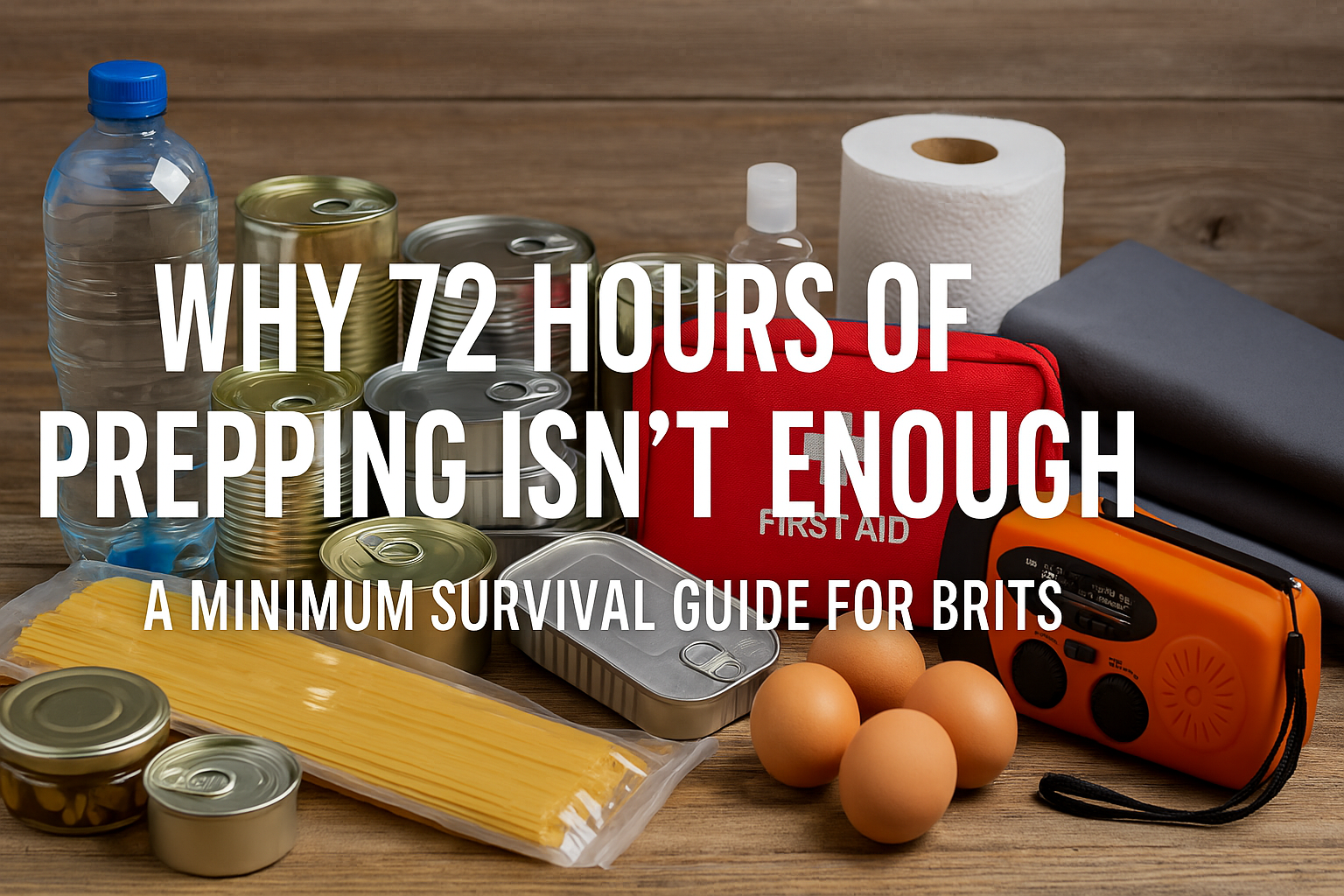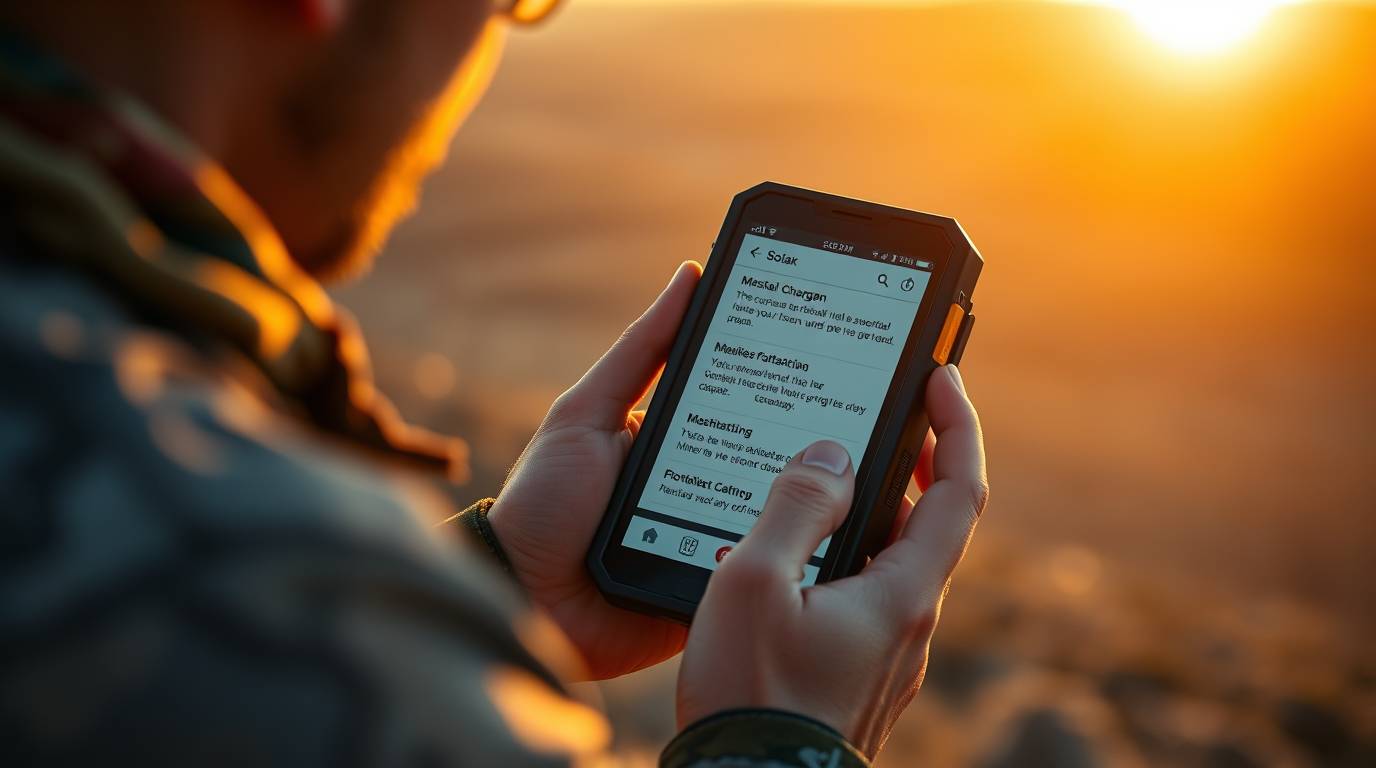This post is a result of the recent survey that I just took based on one of the comments that was left… I thought it might be an interesting one to start with, since for newbies, it might help them to use what they have immediately if they had to…
Scenario. You live in the city or suburbia. So, you’ve just started thinking about prepping… You’ve done a little research online and decided you’re going to buy some “survival stuff,” and start buying a little more at the grocery store… Then the unthinkable happens… Some disaster is coming, and coming fast. It’s going to be a BAD one. The warning is not unlike Hurricane Katrina where people were warned to evacuate. You know that you need to get out quick before everyone else gets on the road. You panic in your mind for a moment, about all the things you have to get together before you Bug Out. You feel overwhelmed and completely unprepared for the news that just came your way because you don’t have a Bug Out Bag and you don’t really have anywhere to bug out to yet? You get a shiver on the back of your neck because this is exactly what you are trying to avoid, and it’s happening now. A million thoughts run through your head. “I don’t have any wilderness training yet.” “We only go camping once or twice a year.” “I don’t have any long term food storage.” “Where are we going to go for three days.”
First things first. You have time. Not much, but you have some time. You need to get ready and get in the car and go. What to do first.
- STOP. By STOP I mean the following.
- SIT
- THINK
- OBSERVE
- PLAN
For instance by STOPing, you can slow down the process of panic, and make a more rational decision about what needs to be done. You quickly realize that there are probably a multitude of items around the apartment or house that you can use and throw in a bag or five gallon bucket and Bug Out with. There are essentials that everyone needs to survive and it is not hard to put together an impromptu Bug Out system in a “pinch.” if you needed to.
So what are the essentials to keep you alive and where can you find them in your home if you absolutely needed to, to gather and bug out.
In an order that I feel is important, I am going to go through what I feel you can “throw in a sack” and in the car to bug out with. In the event you are on foot or on a bicycle, I will try to keep the load as light as possible for you. I will document in my own apartment what I would take with me in the event of a SHTF scenario IF I did not have a Bug Out Bag waiting in a closet for me. I will take pictures of everything and where I have it stored in my home, and how I would carry it.
Remember, this is a completely “unprepared” newbie prepper scenario.
Water
Rule number one. You cannot live without water very long. 3 — 4 days max. Period. It is heavy to carry, and bulky. It is not one of those items you are going want to carry if you are carrying gear and five gallons of water. There is a little you need to know about water. First, not only must you carry it, but second, you need something to hold the water that will also disinfect it. If you are one of those people who goes to Walmart, Target, Sams, Costco, etc and buy cases of bottled water, you’re in luck, because the sun alone can disinfect your water over 8 — 16 hours, and you have a few small canteens you can use to carry your water load. You should go to your laundry closet, dump out one of those waters, and fill it with your UNSCENTED Clorox bleach. This will give you more than enough bleach to clean and disinfect your water with. In fact one of those water bottles will only require a couple drops of water to basically disinfect it. I would also leave the water bottle in the sun for about 8 hours of direct sunlight to also kill any other pathogens.
So in my case, I run to the bathroom, and take out a bottle of Clorox, and load up a water bottle with it. Oh, and please mark the water bottle with a permanent marker, indicating it is bleach.
If you have a 2 quart container to make lemonade or iced tea in with a lid that closes, I would grab one of these as well to transport more water in a container as well… You can use Duct Tape to secure the lid(s) so that they do not pop off or leak.
Food/Cooking
Next I would go to my cupboard, and take a look at what I had. Soups, rice, beans, canned proteins (chicken, tuna, etc.), ramen, etc. I would load up enough that makes sense, trying to gauge how much food I might need/require for a few days (72 hours), keeping weight and water in mind. You will, of course, have to take into consideration water for those items that you will be re-hydrating, cooking, and drinking. Try not to overload on the weight or canned goods unless you are throwing everything in a plastic bin and throwing it in the car… You certainly don’t want to hump so much weight around by hand if you don’t have to.
As for cooking, if I had nothing else, I would take my percolating coffee pot with me and ma mid size cast iron frying pan that I have in my kitchen. You will want something that you can use over a fire or over a stove of any kind. Obviously a couple of basic cooking utensils and a few pieces of silverware would be prudent to throw in your backpack… The coffee pot can be used for boiling water to make it safe to drink, cook soups, ramen, etc. The frying pan, of course, can be used for cooking and eating out of if necessary.
Grab aluminum foil, plastic zip lock bags,
Shelter
Unless you have a tent or RV, I am going to outline here the easiest way I know how to create a shelter from having next to nothing, as I would do it in a situation where I had next to nothing… Most of us have plastic garbage bags under our sink or hiding in a closet somewhere. I would grab a box of those plastic bags (or two boxes), a roll of duct tape, a knife or scissors, and throw them in my pack. You will use them later to cut the bags open, and tape them together with your duct tape to create a waterproof emergency shelter. You can then roll or fold it up once you take it down and safely put it in your pack for re-use. You can certainly use 30 gallon or 55 gallon garbage bags to do this. The choice is yours based on whatever you have. You might want to actually practice doing this. Cutting plastic in a straight line isn’t the easiest thing to do with a knife. This also assumes you are in the warmer of the three seasons…
Do not use all your plastic bags in the field, however, because they make great rain poncho’s as well if you do not have one with you, or great ways to collect and move larger amounts of water from point A to point B.
Fire, Your Heat, Energy and Light Source
I would hope that your home has a few candles, matches, and a lighter or two. These are going to be the essential items to take with you as the core to starting a fire for heat, energy to cook, and as a light source if you have to Bug Out to a wilderness location. If you happen to have a camp stove and several of those 1lb propane tanks, you will want to greab them for your stove if you have it. If you do not, however, and you are bugging out, I would grab whatever matches and lighters you have. I would also grab any cotton balls, dryer lint, or other very flammable items that can help you start a fire. I would also grab any lip balm, Vaseline, or other petroleum based jelly, and any antibacterial gel that you have (it is 60% isopropyl alcohol and when you soak a cotton ball in it, it will burn for an extended period of time) that you have in your home. This could be the difference between being warm and eating in the evening, than not. Make sure you know how to make a fire.
I do a lot of camping so, I am pretty adept at building fires… You should give it a shot. If you have a grill on your terrace, deck or back yard, in the grill, try lighting a cotton ball soaked in petroleum jelly or with antibacterial jell. I have done this many times. Observe how long it takes for the cotton ball to burn down. This will give you an indication of how long you will have to add tinder and kindling to the flame to start your fire.
I also suggest you get the heck out of Dodge and do some camping and practice this for yourself. Building a fire can be easy or hard. If it’s been raining building a fire can take a LOT longer, and that petroleum jelly soaked cotton ball could be your lifesaver.
Also take a look at the homemade fire starters / sticks. They were easy to make, and they will burn 5 — 8 minutes each to help start the fire… I keep some of them in my Get Home Bag in my car, Bug Out Bag, and use them when camping. In an hour or two I can make dozens of them. I simply cut up cardboard from boxes that I keep for storage or from ordering something online. The most expensive part of the equation is the wax that you can buy at any craft store in the home made candle section.
First Aid
You should have a first aid kit. If you do not, go out tomorrow to your pharmacy, get online, go to your grocery store, and either get the components to one and assemble it yourself, or go buy one. You’re going to grab it when the SHTF and bring it with you. Along with that you are going to grab extra feminine hygiene products, hydrogen peroxide, triple antibiotic, etc. to augment the first aid kit.
Duct tape… Duct tape is also a good first aid item. If you need to make a sling, cover up a blister, hold down a homemade bandage on a cut if you don’t have anything in your first aid kit that fits the bill…
Cutting
This should be a no brainer for you. Your kitchen is full of knives. You should be able to grab a couple steak knives, chef’s knife, slicer, etc. Preferably full tang, but we are talking about what you should take based on what you have. You should grab your sharpener so you can keep your knives sharp.
With some of the cardboard discussed above in the fire section, you could take some of that and make a couple of sheaths for your knives so that they are easier to transport. You can fold the cardboard around the knife and then wrap the cardboard in duct tape several times to keep it secure and to protect the cardboard and the blades…
Also, you may want to raid your tool box for a box cutter to be able to handle smaller items. Grab a file so that you can sharpen an axe if you come across one in your travel(s). Also, grab any saws that you have need to cut down any small saplings to create a shelter, other structure, or to cut small fire wood with.
Binding
I don’t know too many people that kept paracord in their home before they started prepping, so any twine, string, dental floss, climbing rope, CAT 5 Network cable, speaker wire, or anything else you can use to tie and bind something. I have several 25′ network cables and a ton of speaker wire. I would grab those and put them in my plastic bin in a pinch. You won’t be able to hold 550 lbs like paracord, but you will be able to tie off things you need to…
Oh, and extension cords work in a pinch too…
Other Items
Grab Needle & Thread, Pliers from your toolbox, extra batteries, a couple of small tuperware containers, magnifying glass if you have one at home,
Now, all of this assumes that you have not started prepping, do not have a cache of resources, no food preps, etc. It also assumes you don’t have gear either, and that the season is a warm spring, summer, fall, as you should know how to appropriately dress for the weather. What I obviously did not go into here were sleeping gear or what to carry it all in, but I think it is safe to say if you have a couple backpacks, you can fill them with your “just in time” gear and get the hell out of Dodge.
If you’re an experienced prepper, feel free to add to the list of everyday items someone could throw together at the last minute.









Flashlight, cash, insurance papers, deck of cards. So much stuff to bring in a bug-out scenario.
You got it. I wanted to illustrate in this post what common items in the home could be used for each purpose in the event of a natural or man made disaster if you have not gone out and purchased any preps yet… Deck of cards, certainly, and maybe travel board games or a board game or two if you are going to be out and about for a while.
Another item to grab might be a small portable radio, either a wind-up or one with batteries, (don’t forget to grab a few extra batteries too).
Nice article! Well thought out and communicated.
It may be worth noting that the priorities may shift a bit depending on the circumstances. For example, in the dead of winter, shelter is far more pressing of a need than water. You can live without water for 3–4 days. But without a shelter, you could perish within a few hours.
Thanks, and keep up the good work.
Joe
Good point, Joe. Thanks.
I love how you start the article, and I beleive it is very important too. “Stop. “You have Time. Not much…”
I make lists for who is to do what and lists to go by, because in the heat of the moment, you probably aren’t thinking straight. So, the list keeps you focused. At the begining of each of these lists, I have the same thing printed, “Stop. We have time, not much but we’ll be ok.” Funny coincidence, but again, I beleive it to be very important.
Thanks for showing that everyone can be prepared, and not a burden.